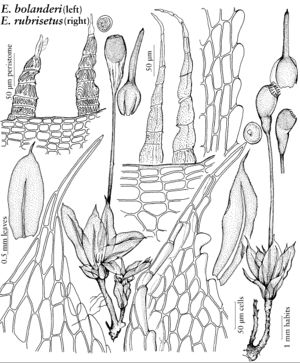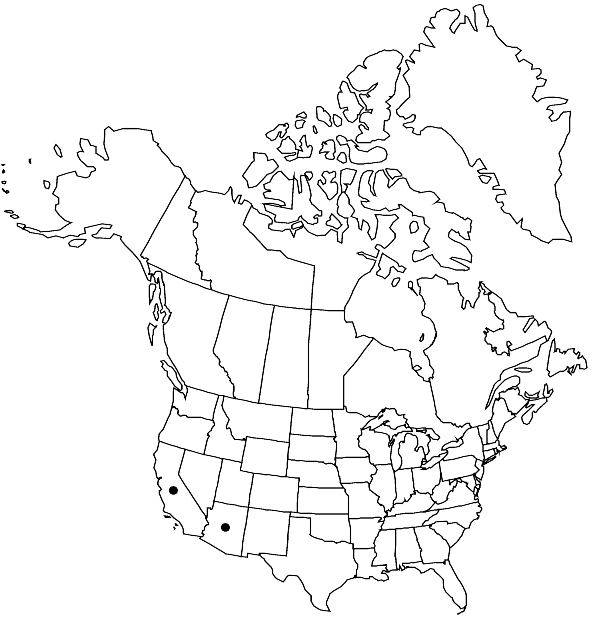Difference between revisions of "Entosthodon rubrisetus"
Moss Fl. N. Amer. 2: 80. 1935,.
FNA>Volume Importer |
imported>Volume Importer |
||
| (5 intermediate revisions by 2 users not shown) | |||
| Line 6: | Line 6: | ||
|place=2: 80. 1935, | |place=2: 80. 1935, | ||
}} | }} | ||
| − | |basionyms={{Treatment/ID/ | + | |basionyms={{Treatment/ID/Basionym |
|name=Funaria rubriseta | |name=Funaria rubriseta | ||
|authority=Bartram | |authority=Bartram | ||
| + | |rank=species | ||
| + | |publication_title=Bryologist | ||
| + | |publication_place=31: 93, plate 9, figs. A–F. 1928 | ||
}} | }} | ||
|synonyms= | |synonyms= | ||
| Line 33: | Line 36: | ||
-->{{#Taxon: | -->{{#Taxon: | ||
name=Entosthodon rubrisetus | name=Entosthodon rubrisetus | ||
| − | |||
|authority=(Bartram) Grout | |authority=(Bartram) Grout | ||
|rank=species | |rank=species | ||
| Line 47: | Line 49: | ||
|publication year= | |publication year= | ||
|special status= | |special status= | ||
| − | |source xml=https:// | + | |source xml=https://bitbucket.org/aafc-mbb/fna-data-curation/src/2e0870ddd59836b60bcf96646a41e87ea5a5943a/coarse_grained_fna_xml/V27/V27_246.xml |
|genus=Entosthodon | |genus=Entosthodon | ||
|species=Entosthodon rubrisetus | |species=Entosthodon rubrisetus | ||
Latest revision as of 21:25, 5 November 2020
Plants 2–5 mm, pale yellow-green. Leaves little contorted when dry, ovate to obovate or spathulate, imbricate, concave, 2–3(–4) mm; margins serrulate distally by projecting ends of thin-walled marginal cells; apices gradually narrowed to a filiform acuminate tip about 425 µm; costa ending 5–8 cells before the acumen; basal laminal cells rectangular (40–55 × 20–25 µm), elongate near margins, distal cells quadrate to oblong polygonal, marginal cells not differentiated. Seta deep brownish red, 6–8 mm, straight, not or scarcely hygroscopic. Capsule deep brownish red, claviform, noticeably gibbous on one side prior to dehiscence, including the long neck that often exceeds half the length, 2–3 mm, mostly retaining shape but the neck sulcate when dry and empty; exothecial cell walls slightly thickened, oblong (3–4:1) and transversely elongate in 3–5 rows proximal to the mouth; operculum pale in contrast to the pigmented capsule and conic-convex, about as high as wide; peristome teeth reddish brown, narrowly lanceolate (85–100 × 10–15 µm), trabeculate basally, becoming hyaline distally and some fusing at the tips, papillose but scarcely striate basally, becoming weakly papillate on the hyaline tips, endostome not seen. Calyptra cucullate, long-beaked, inflated around the capsule, smooth. Spores 24–30 µm, with low papillae.
Habitat: Sandy soil, canyons and desert washes
Elevation: moderate to high elevations
Discussion
The deep red color of the mature sporophytes serves to help identify Entosthodon rubrisetus in the field or in the herbarium.
Selected References
None.

